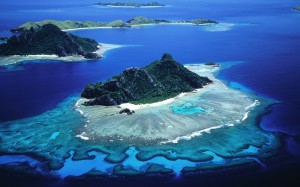- There are about 30,000 islands in the Pacific Ocean, only 2,000 of which are inhabited. Many of the populated islands are less than 10 km2, while some, especially atolls, are less than 1 km2.The 18 Pacific Island countries and territories considered in this study account for 550,000 km2 of land and some 7 million inhabitants spread across 180 million km2 of ocean – about 36% of the earth’s surface.
- Average annual rainfall varies considerably in the tropical Pacific, from over 4,000 mm to less than 500 mm. The higher altitudes of volcanic islands receive more rain, with about a 10% increase per 100 metre rise in elevation.
- The limited freshwater supply in small Pacific islands is used for various purposes, including for towns, industrial activities, agriculture and forestry, tourism, environmental needs and mining. Non-consumptive uses include hydropower generation (e.g. in Fiji, Samoa and Vanuatu), navigation and recreation.
- To meet growing demand, naturally occurring water resources are supplemented with non-conventional ones. The former are surface water, groundwater and rainwater collection; the latter include desalination, imports, wastewater recycling and use of seawater or brackish water for selected purposes where potable water is not needed.
- Some islands, including in Fiji and Tonga, have imported water as an emergency measure during severe drought. In some instances, people move from water-scarce islands to others nearby with more water. On many small islands, local or imported bottled water is an alternative for drinking water, although it costs more than water supplied by local water authorities.
- Many small islands, particularly coral atolls and small limestone islands, generally do not have sufficient water resources for irrigated agriculture, or suitable soil conditions. Irrigation on small islands thus tends to occur on a relatively minor scale except in cases like that of Fiji, where agriculture – primarily water-intensive cultivation of sugar cane as a cash crop – is the largest water user.
The section “Did You Know…?” is taken from the 3rd World Water Development Report “Water in a Changing World“.


